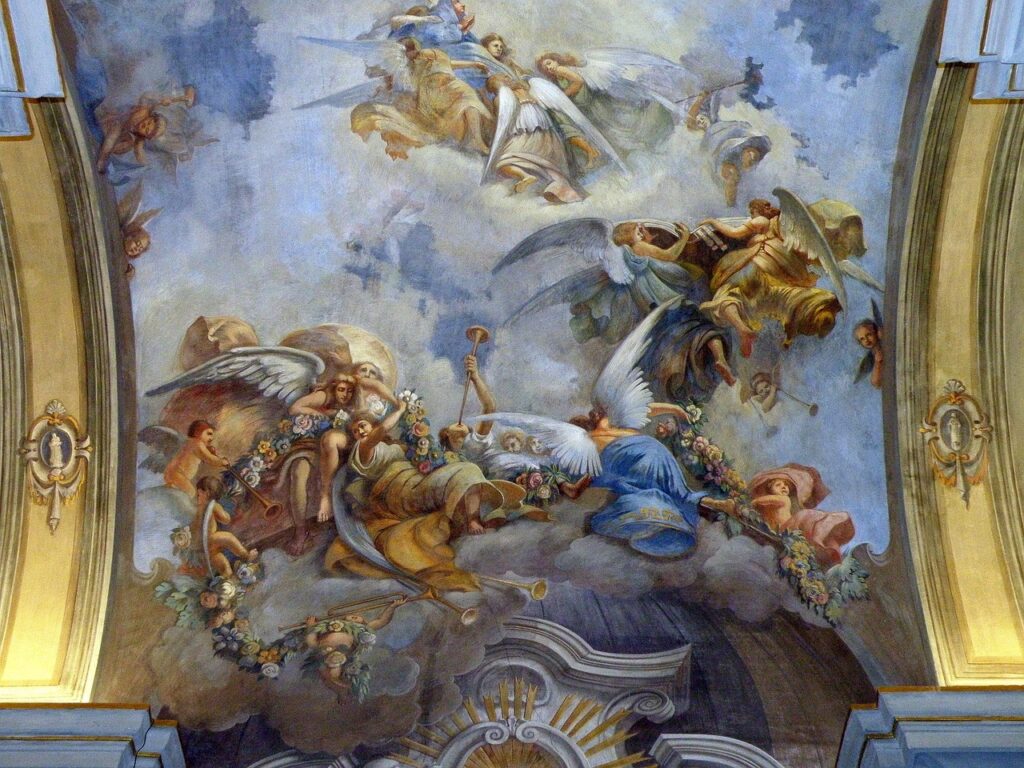
Fresco painting is one of the most enduring and celebrated art forms in human history. From the ancient ruins of Pompeii to the towering ceilings of the Sistine Chapel, frescoes have captured the imagination of viewers for centuries. This distinctive method involves applying pigment to freshly laid plaster, allowing the colours to become an integral part of the wall itself.
Fresco painting doesn’t just adorn surfaces — it transforms them into vibrant, lasting masterpieces.
Let’s explore the fascinating history of frescoes, the techniques behind fresco painting, and what it takes to become a fresco artist today.
The Origins and Evolution of Frescoes
The history of frescoes stretches back thousands of years. Some of the earliest known examples come from the Minoan civilization in Crete, around 1500 BCE. These early frescoes depicted lively scenes of nature, animals, and rituals, offering a glimpse into the culture and daily life of the time.
The technique flourished in Ancient Rome, where frescoes adorned villas and public buildings alike. Vibrant frescoes artwork from Pompeii and Herculaneum still astonishes visitors with its detail and colour, preserved remarkably well under layers of volcanic ash.
However, it was during the Italian Renaissance that fresco painting reached its peak. Masters like Michelangelo, Raphael, and Giotto elevated the art form, creating monumental frescoes that remain cultural treasures today.
Michelangelo’s ceiling in the Sistine Chapel is perhaps the most famous fresco artwork in the world, demonstrating the incredible potential of this medium to convey drama, beauty, and spiritual grandeur.
The Fresco Painting Technique
What makes fresco painting so unique is its reliance on chemistry and timing. The term “fresco” itself comes from the Italian word affresco, meaning “fresh,” referring to the fresh plaster surface that is crucial for this technique.
Here’s how it works:
- A wall is coated with a layer of wet lime plaster.
- While the plaster is still damp, pigments mixed with water are applied directly onto the surface.
- As the plaster dries, a chemical reaction causes the pigments to become permanently embedded in the wall.
This method is known as buon fresco (true fresco). There’s also fresco secco (dry fresco), where artists paint onto dry plaster, though this version is less durable over time.
Because of the drying time, a fresco artist must work efficiently and plan meticulously. Walls are prepared in sections, known as giornate (Italian for “a day’s work”), with each section designed to be completed in a single day. This careful planning ensures consistency in colour and composition across the entire frescoes artwork.
(A Manual of Fresco and Encaustic Painting)
Becoming a Fresco Artist
For those inspired to become a fresco artist, dedication and patience are key. Fresco painting is not just about artistry; it requires an understanding of materials, wall preparation, and timing. Many contemporary artists still study traditional fresco techniques to keep this historic practice alive, often attending specialized workshops or learning under master artisans.
Modern fresco artists continue to explore new themes while respecting the old techniques, blending tradition with innovation. They use both historical methods and updated materials to create frescoes artwork that adorns public spaces, churches, and even private homes.
The Lasting Impact of Frescoes Artwork
One of the most remarkable aspects of frescoes is their longevity. Unlike canvas paintings that can fade or deteriorate, frescoes become part of the architectural structure itself. This durability is why we can still admire frescoes from ancient times, their colours and details remarkably well-preserved.
Fresco painting also holds a special place in the history of storytelling through art. Frescoes artwork has been used to depict religious narratives, historical events, and mythological tales, serving as visual records of culture and belief.
Walking through a space adorned with frescoes is like stepping into a living history book, where every brushstroke tells a story.
(Florence: The Paintings & Frescoes, 1250-1743)
Fresco painting is a testament to the enduring power of art and human creativity. From the sun-soaked walls of ancient villas to the awe-inspiring ceilings of Renaissance cathedrals, frescoes continue to captivate audiences with their beauty and craftsmanship.
For the dedicated fresco artist, this technique offers a unique opportunity to create lasting masterpieces that stand the test of time. Whether you’re an admirer of historic frescoes artwork or inspired to try your hand at this ancient craft, fresco painting invites you to become part of a tradition that spans centuries.
So next time you gaze upon a fresco, take a moment to appreciate not just the beauty of the image, but the incredible skill and history behind it!
